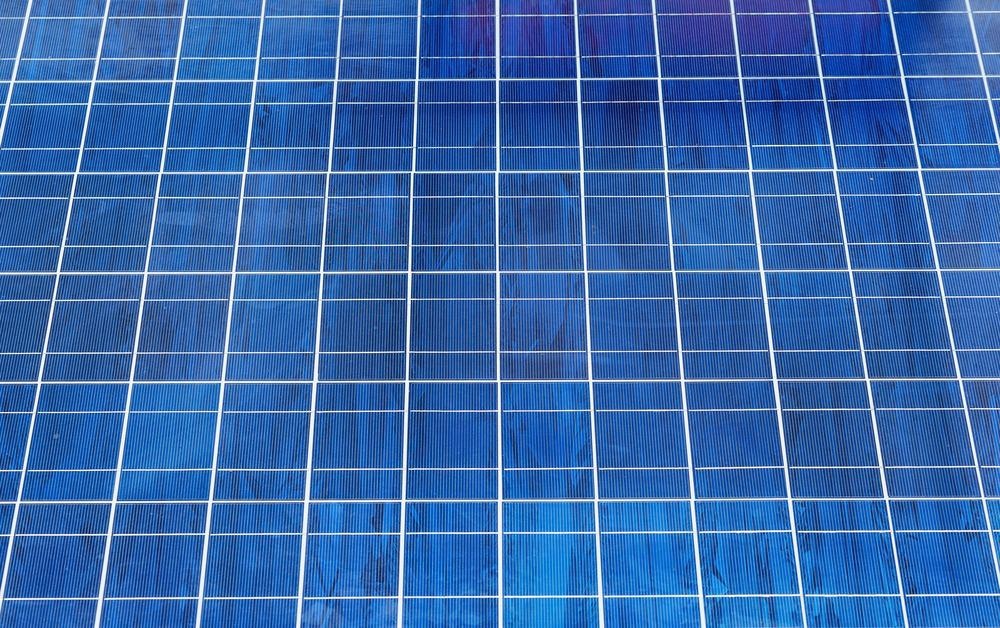An innovative technique to develop transparent displays with extremely high resolution and flexibility is presented in the study published in the journal ACS Applied Nano Materials.

Study: Electrohydrodynamic Jet-Printed MAPbBr3 Perovskite/Polyacrylonitrile Nanostructures for Water-Stable, Flexible, and Transparent Displays. Image Credit: Jozef Klopacka/Shutterstock.com
Transparent Displays
Ever since the emergence of LEDs, solution-based perovskites have attracted interest in the area of display technology due to their exceptional optical-based electronic characteristics and ease of preparation.
Owing to the benefits of solution-based perovskites, researchers have long envisioned the commercial adoption and implementation of flexible transparent displays.
When contrasted with conventional vacuum-based fabrication methods, solution-based manufacturing has the benefits of being fast and inexpensive, as well as promoting large-area manufacturing.
Inkjet-Printing – Simple yet Effective
Inkjet-based printing methods have been intensively investigated for high-resolution sequencing amid solution-based procedures owing primarily to their ease of processing, cost-efficacy due to reduction in waste, and excellent dependability when contrasted with traditional lithographic methods.
Inkjet-based printing methods have been viewed as a viable sequencing tool for electronics because of their compatibility with flexible polymers.
Current Techniques
Numerous follow-up experiments for MAPbBr3/CsPbBr3 perovskites were undertaken using the inkjet-based printing approach, employing a piezoelectric effect-based printing unit to create fine and homogeneous designs. But even then, the droplets are hardly in the desirable range.
To decrease the diameter of the droplets, one technique is to raise the viscosity of the ink. By sending electrical stimuli to the expelled ink at the tip of the nozzle, the electrohydrodynamic (EHD)-based jet printing process permits the expulsion of ink particles finer than that of the actual nozzle diameter using inks with high viscosity.
The electrohydrodynamic jet-based printing technique has been claimed to possess the ability to make high-resolution nanostructures with substance compositions ranging from a few micrometers to hundreds of nanometers.
Encapsulating perovskite nanoparticles in a protected polymer film is one method of providing stability from water or other polar solvents. Among the numerous encapsulating polymers, one particular polymer has been identified as an effective substance for providing lead halide-based perovskites with solvent resistance. That particular polymer is polyacrylonitrile (PAN).
Advantages of PAN-Based Nanocomposite Structures
The PAN-perovskite nanostructure, according to researchers, provides benefits in managing the morphology, crystalline nature, and electrical luminescence features of elevated-performance displays. Furthermore, the PAN-perovskite nanostructure allows for flexibility in printing perovskite designs without sacrificing transparency.
To produce a PAN-based perovskite nanostructure using an inkjet-based printing technique, the inks must first be generated by combining PAN polymer with a perovskite solution. Nevertheless, as previously stated, the viscosity associated with PAN-based inks is substantially high, making them unsuitable to be used for standard inkjet-based printing processes due to limitations associated with the ink's expulsion energy.
To resolve the ink expulsion issue and expel the ink effectively from the tip of the nozzle, further effort is necessary; therefore, the EHD-based jet printing approach with the aid of electrical stimuli has been viewed as a viable solution.
Purpose of the Study
In this regard, the team proposed using EHD-based jet printing with surface morphology manipulation to create high-resolution and stable methylammonium lead bromide (MAPbBr3) and PAN-based nanocomposite designs for flexible transparent displays.
The team improved the ink and printing settings to generate MAPbBr3 and PAN-based nanocomposite designs with substantially elevated resolution.
Scanning electron microscopy was used to identify the MAPbBr3 and PAN-based nanocomposite design formations and their respective surface morphologies.
Important Findings
The team used a single-step EHD-based jet printing approach and surface morphological control to create high-resolution, transparent, and stable MAPbBr3/PAN-based nanocomposite designs.
To produce a steady EHD jet, the ink and processing parameters were tuned. To find the best ink characteristics, the team changed the MAPbBr3 and PAN proportions and their respective concentrations to alter the conductance and viscosity of the ink.
The team also noted optimum printing settings for high-resolution imprinting with a resolution of roughly. The PL intensity of the MAPbBr3 and PAN-based nanocomposite designs created under optimal circumstances was maintained without substantial deterioration for one month at ambient settings, demonstrating exceptional stability.
The densely and tightly packed surface morphology was responsible for the excellent stability and transmission ability of MAPbBr3 and PAN-based nanocomposite designs created under ideal conditions.
The findings by the team showed that MAPbBr3 and PAN-based nanocomposite designs created using the single-step EHD-based jet printing approach have significant promise for flexible and highly stable, transparent display applications.
Reference
Kang, G., Lee, H., Moon, J., Jang, H., Cho, D., & Byun, D. (2022). Electrohydrodynamic Jet-Printed MAPbBr3 Perovskite/ Polyacrylonitrile Nanostructures for Water-Stable, Flexible, and Transparent Displays. ACS Applied Nano Materials. Available at: https://pubs.acs.org/doi/10.1021/acsanm.2c00753
Disclaimer: The views expressed here are those of the author expressed in their private capacity and do not necessarily represent the views of AZoM.com Limited T/A AZoNetwork the owner and operator of this website. This disclaimer forms part of the Terms and conditions of use of this website.